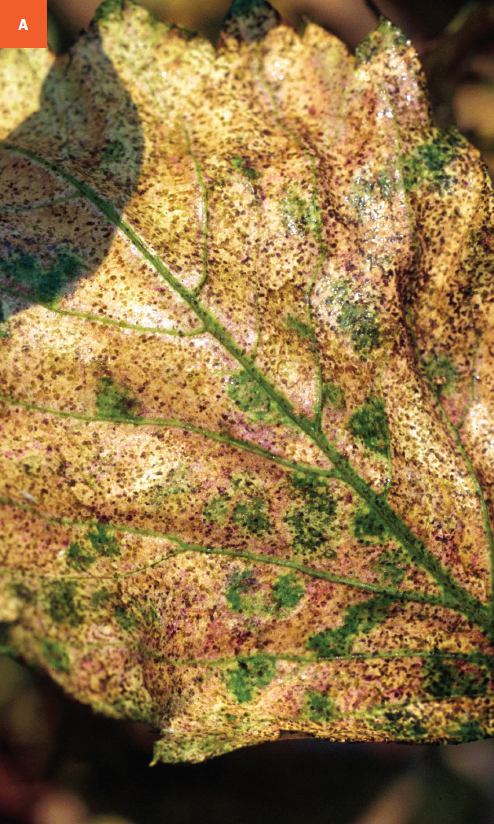Leafhoppers
Erythroneura spp.
HOST Grape, Virginia creeper, maple
DAMAGE/SYMPTOMS Leafhoppers are sap-sucking insects. Their feeding results in stippling and flecking of the leaves. Heavier infestations can cause graying of the foliage and defoliation.
LIFE CYCLE Leafhoppers overwinter as adults in debris or sheltered areas around previously infested plants. The adults emerge in the spring and deposit eggs below the leaf surface. Eggs hatch within one to two weeks, and the nymphs begin feeding on the leaves. They become adults in approximately three weeks. There are three to four generations per year.
MANAGEMENT Most leaves and vines can tolerate relatively high populations of leafhoppers without affecting plant health. It is important to remove weeds and debris in late winter to early spring to reduce overwintering populations. The leafhoppers can be dislodged or trapped by shaking the plant and holding a sheet or piece of paperboard underneath with a sticky substance (such as Tanglefoot). They have many natural enemies, such as lady beetles, spiders, and parasitoid wasps in the genus Anagrus (attack leafhopper eggs). Several contact insecticides are available for control, including horticultural oils, insecticidal soaps, and those with the active ingredients Beauveria bassiana and spinosad. Insecticides with the active ingredient carbaryl can also be used. Complete coverage of the foliage is critical. To protect pollinators, apply only during late evening, night, or early morning when bees are not active.
A Feeding damage from leafhoppers on a Virginia creeper leaf.

